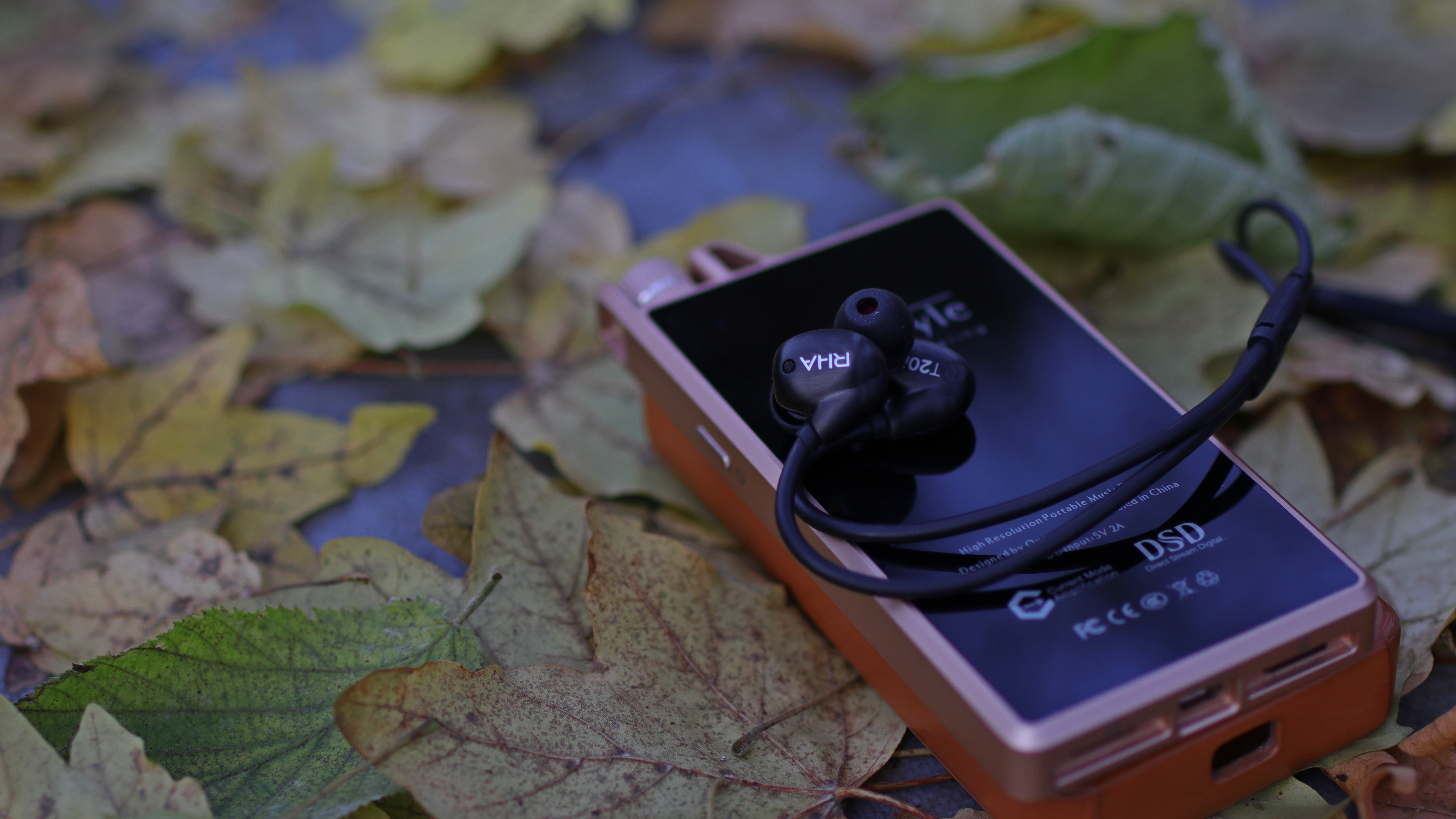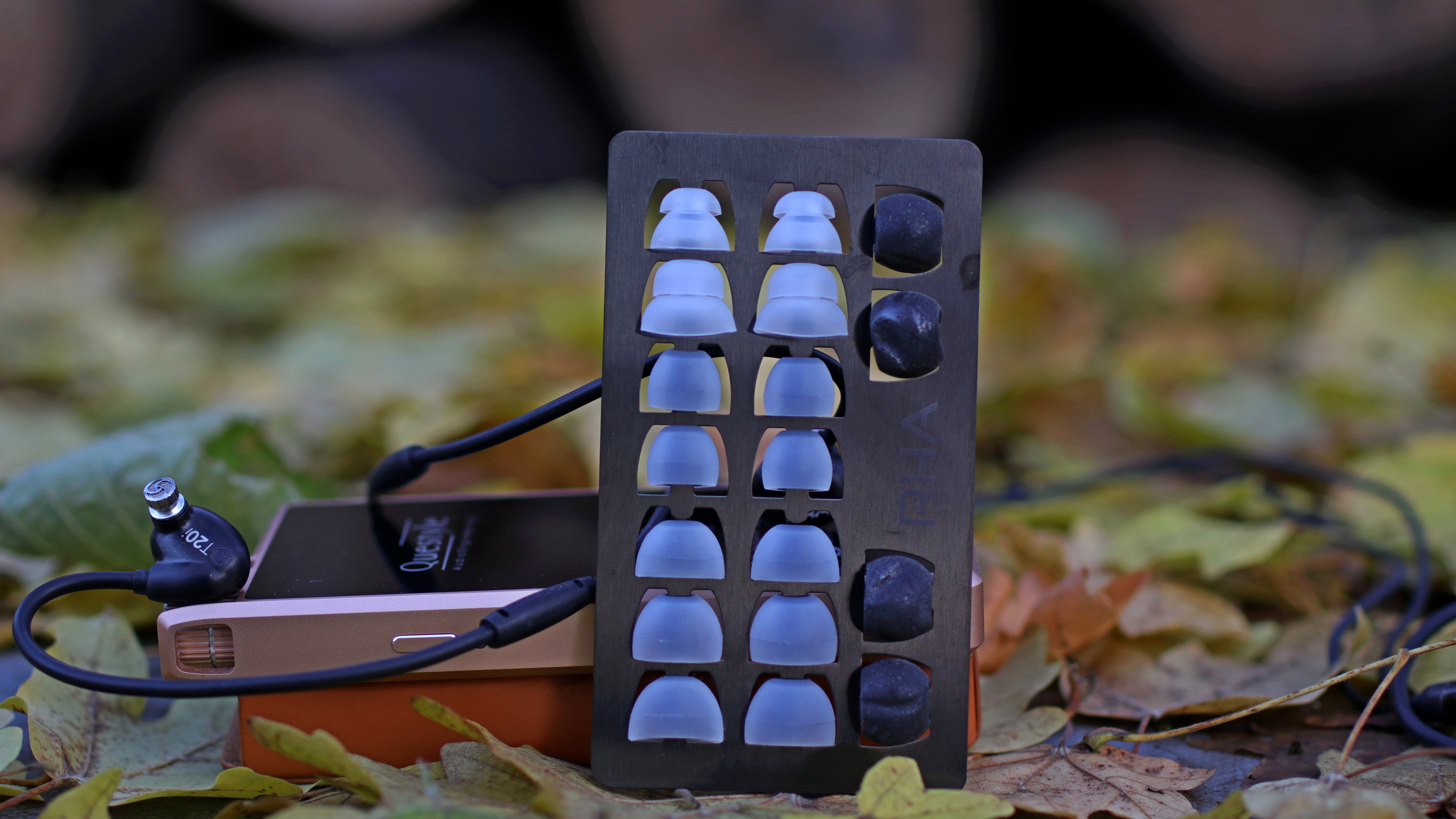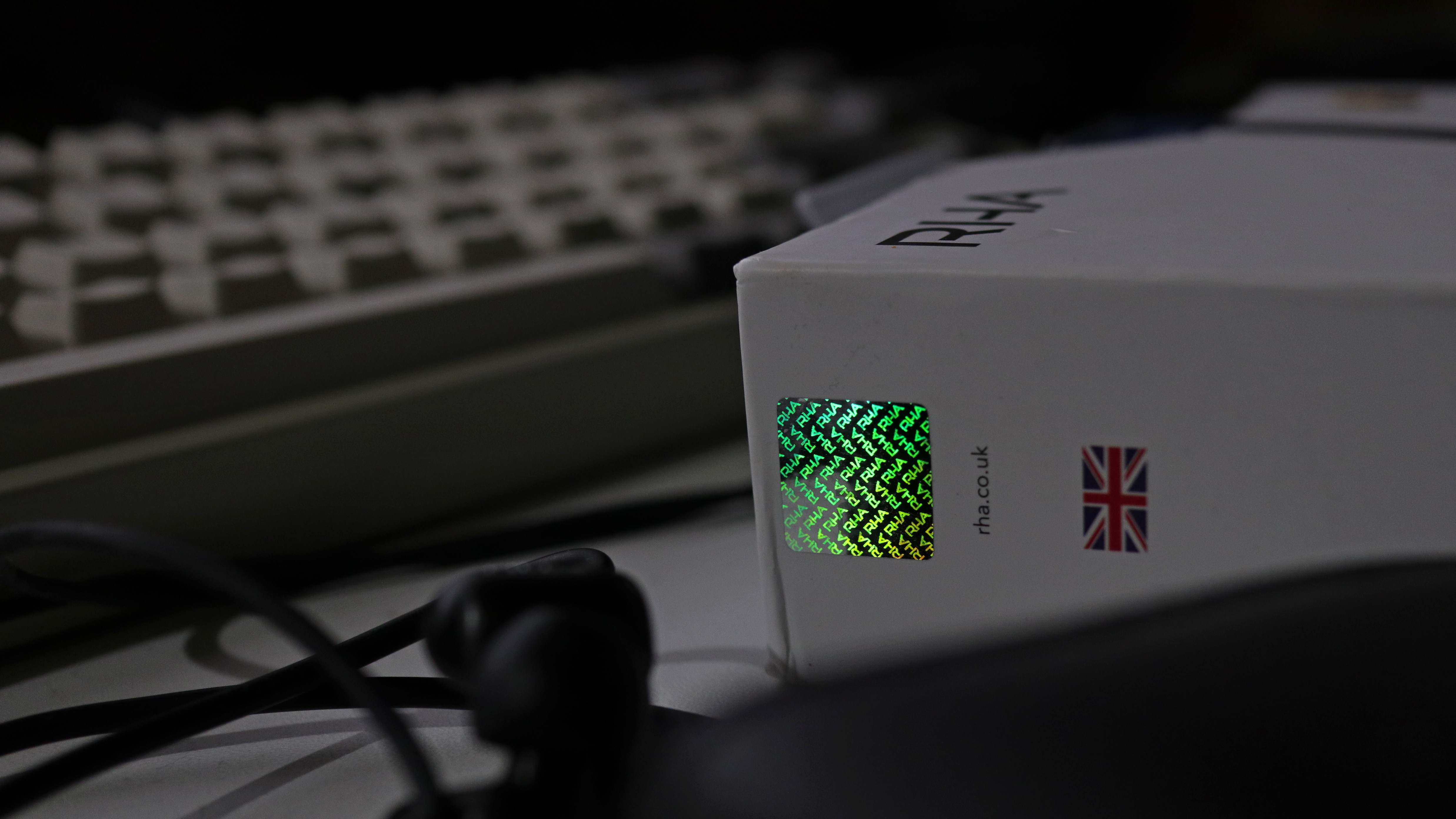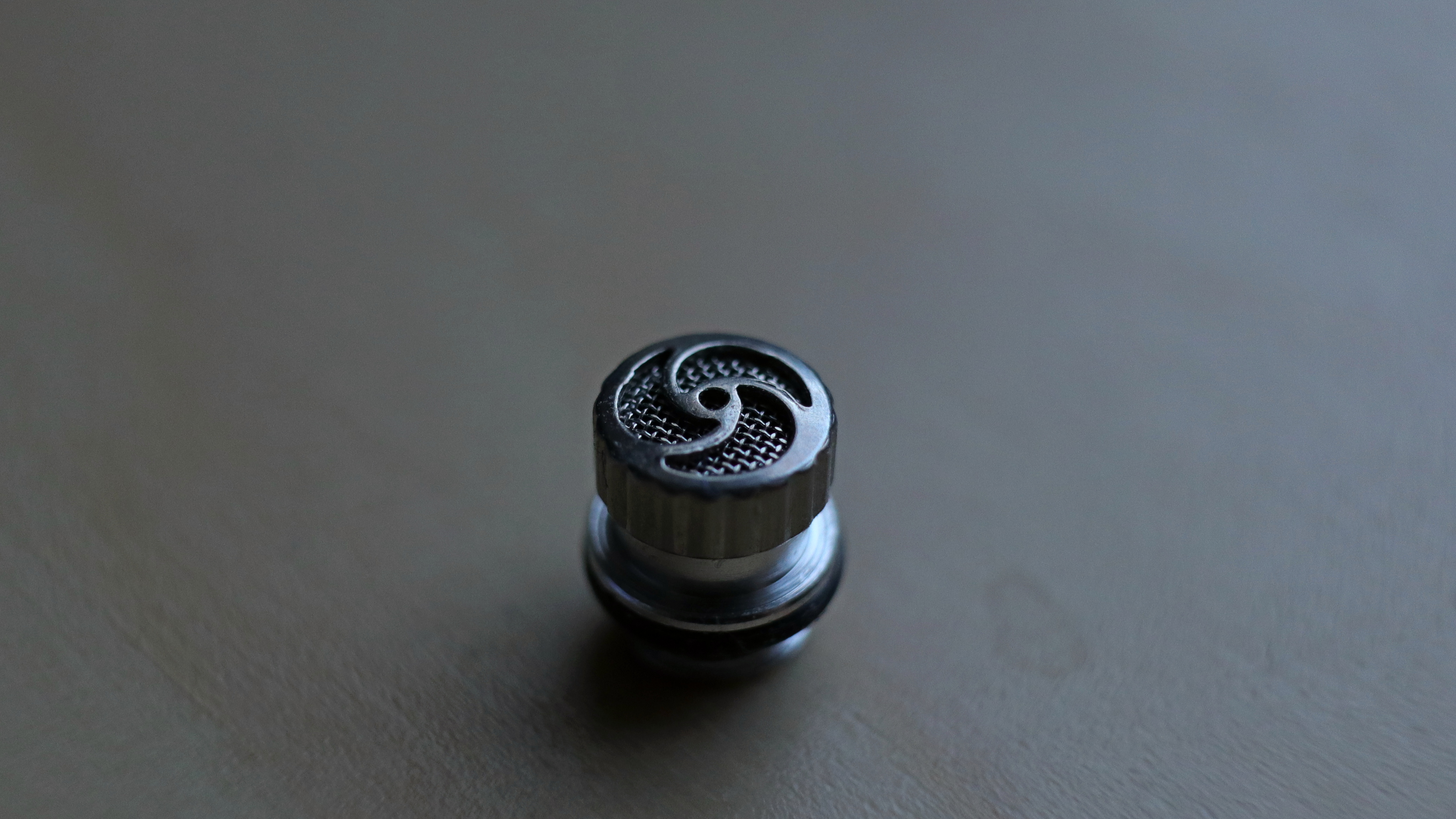This is an encouraging tale of disappointment and an anecdote of the merits of patience --
an unveiling of sound that’s rich, lush and beguiling!
I quite recently purchased the
RHA T20, as I was curious about the tuning filters (
Bass, Reference, Treble) and the proprietary Dual Coil dynamic driver. I’ve heard a lot of good things about their MA750 (and mixed thoughts about their overly bass-focused T10). When I first put on the T20 at the store right after purchase and played some test tracks, I had the compulsion to immediately return the item. But after mustering some courage (and faith), I decided to keep them and let them run their course. So after about a week of (
brain or
gear) burn in, I’ve come to enjoy these sexy & robustly built IEMs (
with a bit of tip-rolling).
For this review, I won’t go over the packaging, build and accessories (
as others have done a wonderful job with that already), but will focus on the RHA T20’s sonic qualities.
***PREAMBLE***
I’m a 41 year old lover of all things sonic, with some classical voice training. I compose cinematic-inspired pieces & make choral arrangements in my spare time. I enjoy listening to a wide spectrum of genres, such as classical & cinematic scores, choral music, jazz, folk, world / new age, musicals/theater, pop, rock & alternative. I prefer a relatively flat signature, with some bass enhancement (
but not bass-head levels), or presentations with a mild “u” signature (
not an exaggerated “v”). I don’t consider myself as an “audiophile” but I am a self-professed music lover. Despite being new to this hobby, I believe I can discern tonal & pitch variances quite accurately. Nope, I am not getting monetary compensation from RHA for this review – this is simply an exercise of sharing my auditory experience regarding RHA’s in-ear monitor, the T20, with the hope that you may find it helpful (if not, at least entertaining). Just remember – my ears, gears & sensibilities. Your tastes and perceptions would most likely vary.
Btw, do check out some notes at the end of this review for my thoughts on burn in (gear/brain), suggested product improvements, as well as RHA’s superb after-sales service.
***GEARS & MUSIC TRACKS***
For this assessment, I used my Cayin N3 (warmish neutral tonality), gain set on medium for most tracks, volume primarily at 50%. The T20’s stock “
reference” tuning filter was used. EQ was left untouched. Aside from at least 100 hours burn in (
brain or
gear), most importantly, I also used some spare wide bore / shallow tips I had lying around. Using these tips, instead of the stock tips, the sound opened up and the bass was tamed yet still commanding, while maintaining body of the mids, as well as the treble energy. I tried the “treble” filters, but found the overall signature became too “v-shaped” for my tastes, and the “bass” filter was just too bassy for an already warm default signature. No external amp was used.
Below are the primary tracks (FLAC) used to evaluate sonic qualities & presentation, and the T20’s delivery of certain genres, instruments & vocal ranges:
Jupiter: The Bringer of Jollity (Gustav Holst)
Chasing Pavements -- Live at The Royal Albert Hall (Adele)
Marche Royale (Igor Stravinsky)
There’s A Small Hotel (Jane Monheit –
soprano range)
Anch'il mar par che sommerga -- Bajazet (Cecilia Bartoli --
mezzo soprano range)
Breathe Again (Toni Braxton –
alto range)
Even Flow (Pearl Jam –
baritone/high-baritone range)
Believe Me Natalie (The Killers –
high-baritone/tenor range)
If Ever I Would Leave You (Robert Goulet –
low baritone / bass range).
Kadu Buva (Kenny Wollesen, Jonathon Haffner & Dalius Naujo)
Young Hearts Run Free (Kym Mazelle)
Tundra (Amber Rubarth)
Sweet Georgia Brown (Monty Alexander)
Pretty Piece of Flesh (One Inch Punch)
…and some other music tracks, across different genres.
***THE MEAT***
So here are my thoughts about the previous flagship offering from Reid Heath Acoustics – the T20…
TONALITY & SIGNATURE
INITIAL LISTEN:
Bloom. Boom. Dark. Veiled. Aggressive. Congested.
The lows were overly dominant, as if one was swimming in sub-bass. Vocals and mids sounded curtained off. Treble sounded muffled. Gasping for air.
AFTER BRAIN/GEAR BURN IN:
Detailed. Energetic. Warm. Rich. Expansive.
The T20 follows RHA’s V-shaped house/signature sound with a stout low-end and pronounced highs, best paired with a neutral or slightly bright/cold DAP/DAC, in my opinion. I think my initial dismay was due to the fact that I’ve been using the Fiio EX1 2nd Generation on most days prior to acquiring the T20. The Fiio EX1ii is an IEM that is generally bright and somewhat balanced, with enhanced but controlled lows, superb soundstage / airiness / imaging, and with mids & treble that I enjoy. Also, I believe that my Cayin N3 (
unfortunately) adds to that already warm & bass-heavy presentation of the T20 (
the N3 is slightly warm to neutral).
So yes, the sound did take some getting used to (
or the drivers have finally flexed their muscles).
Now the T20 is more enjoyable, offering a full-bodied, richer and impactful presentation.
The T20 is not the most revealing, but in lieu of this, it enhances the sound making even some bad recordings/mixes sound quite enjoyable. The T20 is not ideal for reference/mixing but it is definitely crafted for
music enjoyment, assuming you’ve taken a liking to its type of presentation.
LOWS
Sub-bass emphasis, with decent rumble & extension – a good backdrop to the rest of the higher frequencies. Emphasized but rendered like a sonic wall at the back of the stage.
Mid-bass is punchy and quite fast, and surprisingly doesn’t intrude much on the lower mids.
I would have loved the lows, if they were at least 2db lower. The bass can be a little too much for my tastes, thus, I had to tip roll as I don’t like touching the EQ on my DAP. The stock narrow-bore / low silicone tips further emphasize the bass, which may suit those who want heftier lows. I chose to use my spare wide bore / short silicone tips to lessen the funnel effect and tone down the bass –
the sound becoming more balanced and enjoyable!
MIDS
Male Vocals are natural and full-bodied, though very slightly recessed and can get quite drowned out on busier tracks (especially baritone/bass voices). Eddie Vedder’s vocals in “Even Flow” was well rendered with ample grit but a little less so compared to how the Audiofly AF56 or iBasso IT03 does it. Still, alternative rock/grunge sounds great on the T20! Robert Goulet’s rendition of “If Ever I Would Leave You” was simply sublime, with sufficient body, emotion and warmth!
Lower Female Vocals are more forward, slightly dry yet natural sounding – Tony Braxton’s vocals in “Breathe Again” had an enticing warmth & heft to it! Higher Female vocals have better imaging and ample airiness, and carries over some warmth of the lower registers, resulting in vocals that sound fuller despite the higher pitch.
Good transience and micro-detail retrieval for instruments such as trumpets, horns, guitars – as long as the track does not get too busy.
TREBLE
Lower treble is prominent with decent clarity & detail retrieval, giving it energy & character. Violins are energetic, forward and detailed enough yet sound ever so slightly smoothed over. I actually find this treble rendition as one of the T20’s charms –
energetic yet not grating! Btw, I could handle pronounced treble, so YMMV.
Upper treble extends quite well. Cymbals and high hats have good shimmer without becoming splashy, though sound slightly fuller than they should. Sibilant-prone tracks are not as sibilant, due to the overall darker / warmer character of the T20.
SOUNDSTAGE, IMAGING, TRANSPARENCY
Quite intimate compared to the superbly staged Fiio EX1ii and the iBasso IT03, but still above average. However, I occasionally get surprised with the T20’s soundstage rendition – it
can sound expansive, depending on the track (resolution, mix/mastering, etc.). The T20 has ample width, closely followed by height, and some depth. It has enough air, but is not as airy as the offerings from Fiio and iBasso. However, the T20 can still deliver exceptional directional queues, positioning & holographic effects despite its more intimate soundstage. Things can get quite claustrophobic on very busy tracks, due to the overall warmth – however, it barely shows distortion even in louder volume settings (
an interesting finding!).
DRIVABILITY & SENSITIVITY
The T20 is quite easy to drive (16 Ohm impedance with 90dB sensitivity) on my Cayin N3 with volume averaging at 50% on medium gain. Its frequency range of 16-40,000Hz does hint at the impactful presence of lows & highs. It has an almost black background and an unnoticeable driver reflex (if any).
BRIEF COMPARISONS
As of now, I don’t have other gear in the same price range to directly compare with the RHA T20 (purchased at approximately US$200).
So I’ll just make comparisons with some of my other IEMs:
Vsonic GR07 Classic Edition (approx. US$100)
iBasso IT03 (approx. US$300)
Audiofly AF56 (approx. US$100)
Hopefully these comparisons will help you get a better idea of the sound virtues (
and cons) across the budget/entry/mid-level price ranges. Just note that the aforementioned prices were as of time & location of purchase.
Comparison Guide:
> is defined as “more but just by a little compared to…”
>> is defined as “very perceptible variance; obvious difference”
= is defined as “equal to; same as”
*
By the way, even if a certain IEM is positioned at the last rung, it doesn’t mean that that particular quality is absent or lacking,
as it can still be average / above average. I will call it out if the model really suffers/shines immensely in a particular aspect.
So here are the gears stacked against each other, exemplifying certain qualities, from the most to the least:
Neutrality = GR07 > IT03 > AF56 > T20
Timber/Naturalness = T20 > IT03 = AF56 > GR07 (
upon further listening, I realized that the GR07 is the least natural sounding among this roster. However, the GR07 still has good timbre and doesn’t sound too digital / artificial / metallic, albeit sounding ever so slightly nasal in certain vocal renditions, compared to the other three)
Detail/Resolution = IT03 >> AF56 = T20 > GR07
Airiness & Clarity = IT03 > GR07 = AF56 > T20
Imaging & Positioning = GR07 = IT03 > AF56 > T20
Soundstage = IT03 = AF56 > GR07 > T20
Dynamics = GR07 = AF56 > IT03 > T20
Transience = IT03 > AF56 > T20 = GR07
Bass Quantity = T20 > AF56 = IT03 > GR07
Bass Quality = T20 = AF56 > IT03 > GR07
Mids Quantity = GR07 = IT03 > T20 > AF56
Mids Quality = T20 = AF56 = IT03 > GR07
Treble Quantity = T20 = IT03 > AF56 > GR07
Treble Quality = IT03 > T20 = AF56 > GR07
Amount of Sibilance = GR07 = AF56 > IT03 > T20 (
based on first listen, but all have tapered down after ample burn in, and clearly, the T20 wins here!)
Comfort = T20 > GR07 >> IT03 > AF56
Apparent Build / Durability = T20 >> IT03 > GR07 > AF56
Immersion / Engagement = T20 = AF56 = IT03 >> GR07 (
the GR07 is the most neutral of the four but still manages to be engaging. But the other three models have the upper hand with their own unique form of immersive presentation.)
CLASSICAL/LIVE = IT03 > AF56 = GR07 = T20 (
the enhanced lows of the T20 and AF56 balance the typical treble-centered classical genre, while the GR07 allows most, if not all, the voices & instruments to clearly assert themselves)
ALTERNATIVE/ROCK= T20 > AF56 = IT03 > GR07 (
the T20 really shines here, though the IT03 & AF56 are not very far behind!)
R&B/JAZZ = T20 > AF56 > IT03 = GR07
POP/EDM = IT03 = T20 > AF56 > GR07
***OVERALL***
The RHA T20 is a commendable all-rounder and a good day-to-day music companion, excelling in studio-produced tracks (
alternative, rock, EDM, pop), and genres that call for more pronounced lows. It’s satisfying enough for live or concert hall recordings that demand impeccable imaging, clarity and soundstage, while giving an entertaining and exceptional low-end balance to treble-focused genres such as classical/orchestral. The T20 is a looker with a luscious pebble-like solid steel injection-molded housing. It feels robust, with RHA’s standard three-year warranty adding to that confidence. Although the T20 can improve on staging, it delivers a cohesive sound with its Dual Coil dynamic driver. If you’re used to cold / neutral / flattish IEMs and are seeking an exciting yet warm signature, natural (
almost analog-like) timbre and a robust bass, the T20 is certainly a viable option. What began as a dark & lackluster experience transitioned into a tale of delight, with Reid Heath Acoustics’ T20 eventually unveiling its charms –
an immersive, lush and full-bodied life-like sound for sheer musical enjoyment!  ***NOTES***
1) WARRANTY
***NOTES***
1) WARRANTY
Aside from the sexy & robust metal housing, and lively sound, I purchased the T20 due to the generous 3-Year RHA warranty. When my cable had some problem (
it happens to the best of us) and the local retailer was less than engaged with my problem, I emailed RHA directly and they responded and acted fast, sending a replacement unit immediately. Thus, it’s easy for me to recommend the T20, and RHA as a company –
buy with confidence!
2) BURN IN
I’m still on the fence regarding burn in. Do small transducers, particularly Dynamic Drivers, really change their sonic renditions in time, or is it just my brain becoming accustomed to the sound and/or has become selective to the presentation and frequencies to create a more enjoyable listen? Frankly, there’s not much change in my other IEMs after ample burn in, but with the RHA T20,
it’s quite a "night & day" difference! So whether the T20’s dual-coil dynamic driver really flexed itself to sound better through use, or my brain and ears simply adjusted, I would still recommend these IEMs for that lush and natural sound (
albeit sometimes too powerful bass).
3) RECOMMENDATIONS to RHA
I think RHA has something nice going on with the T10 and T20, particularly with the tuning filters. The T20 is simply bass-abundant, so whichever filter you use, the lows would still assert their undeniable presence. It would be nice if RHA could create some tuning filters that really enhance the mids (
making them more forward) or one that truly tones down the bass. The over-ear hooks' sheathing could be improved, too, as they have started to crinkle a tiny bit. Length of the wire/cord could also be reduced for more manageability. But, please, do keep using that sexy injection molded stainless steel construction (
which is surprisingly light!) to maintain the robust and premium feel of your products, as most plastic/resin housings can feel quite, well, inexpensive. Replaceable wires/cords would also be a nice touch, to lengthen use and enjoyment of RHA IEMs.




























I know it may sound a little bit odd considering the price point...but how does Campfire honeydew compares to Rha t20i in terms of bass, soundstage & imaging ??